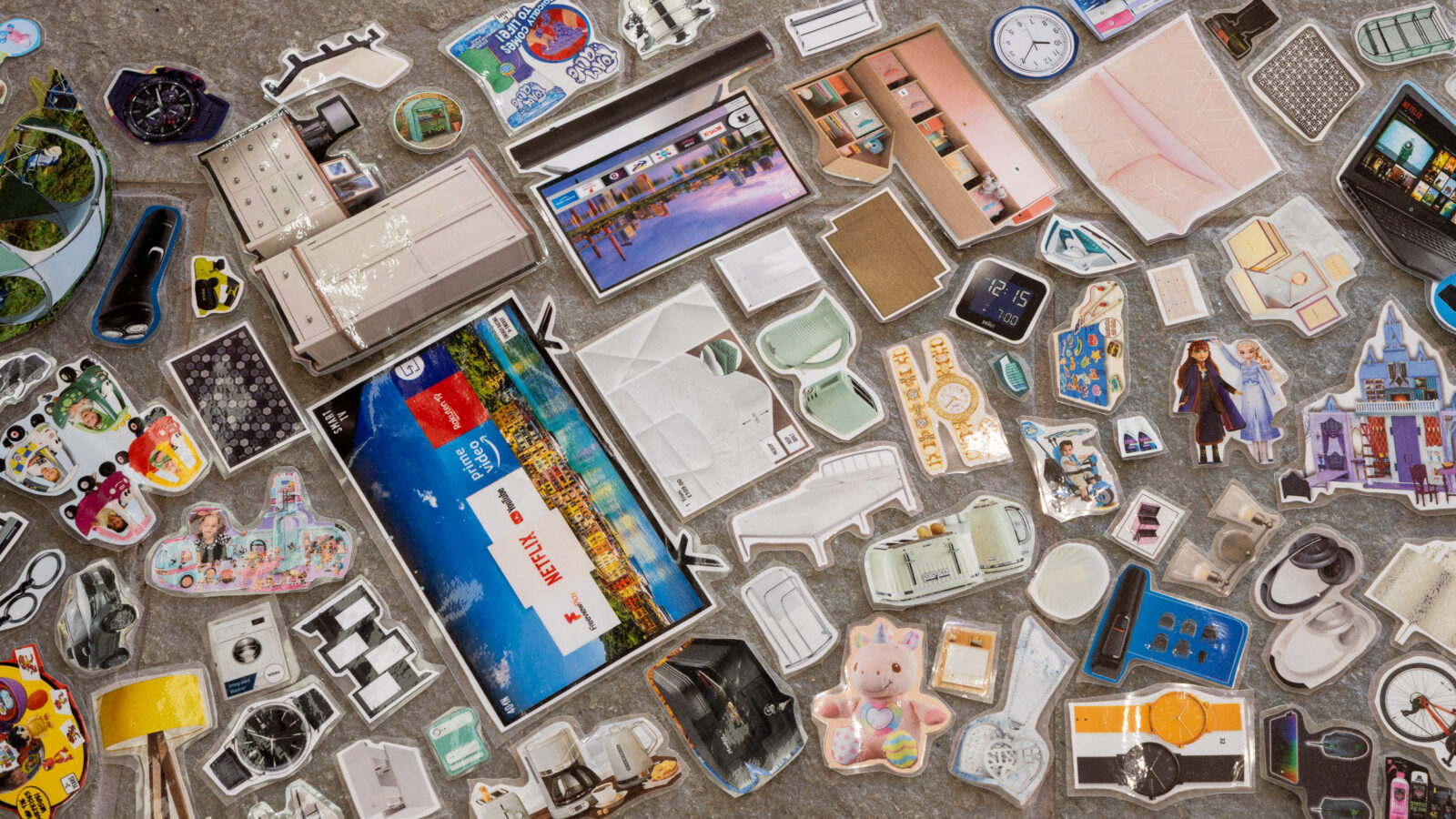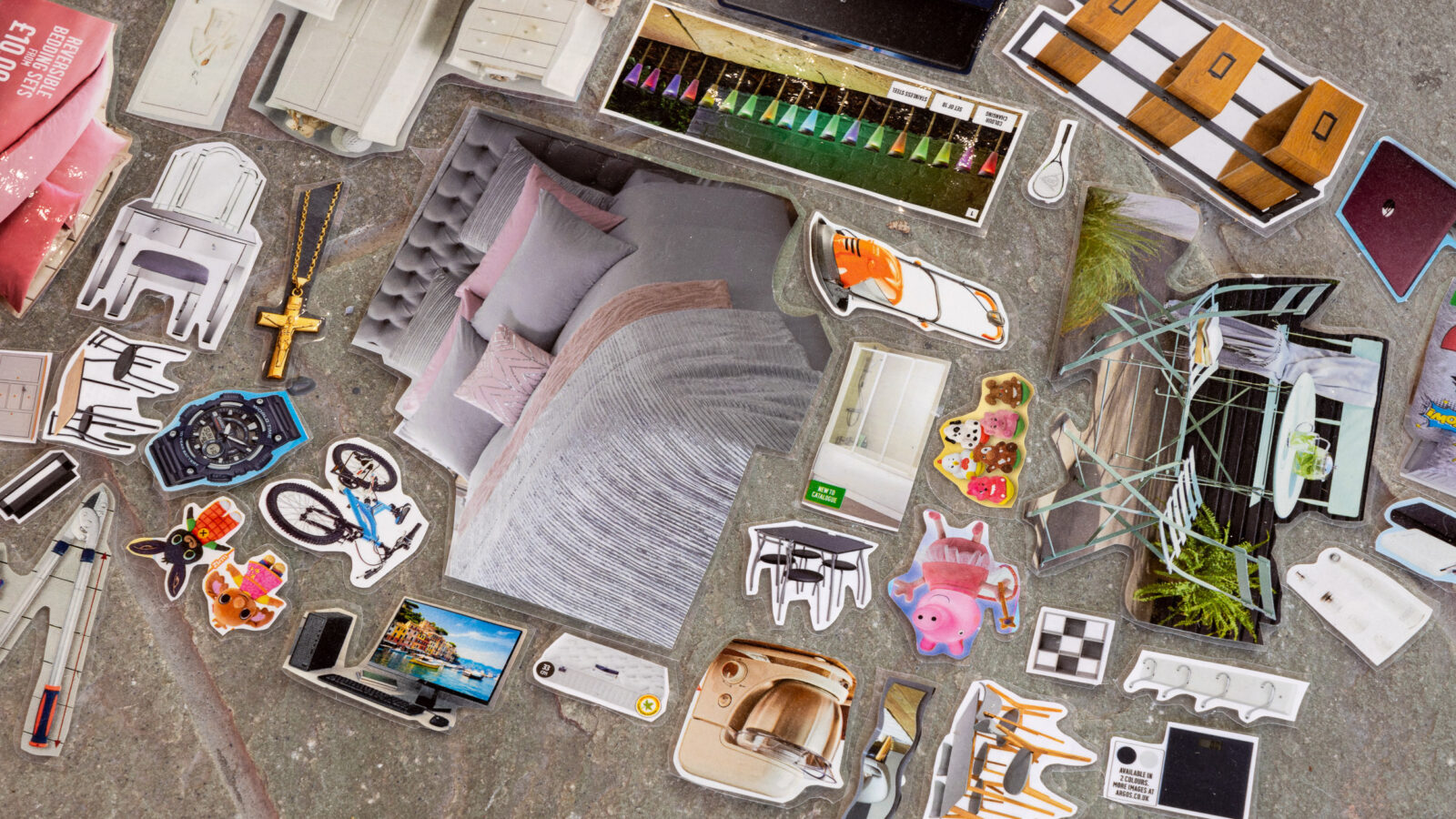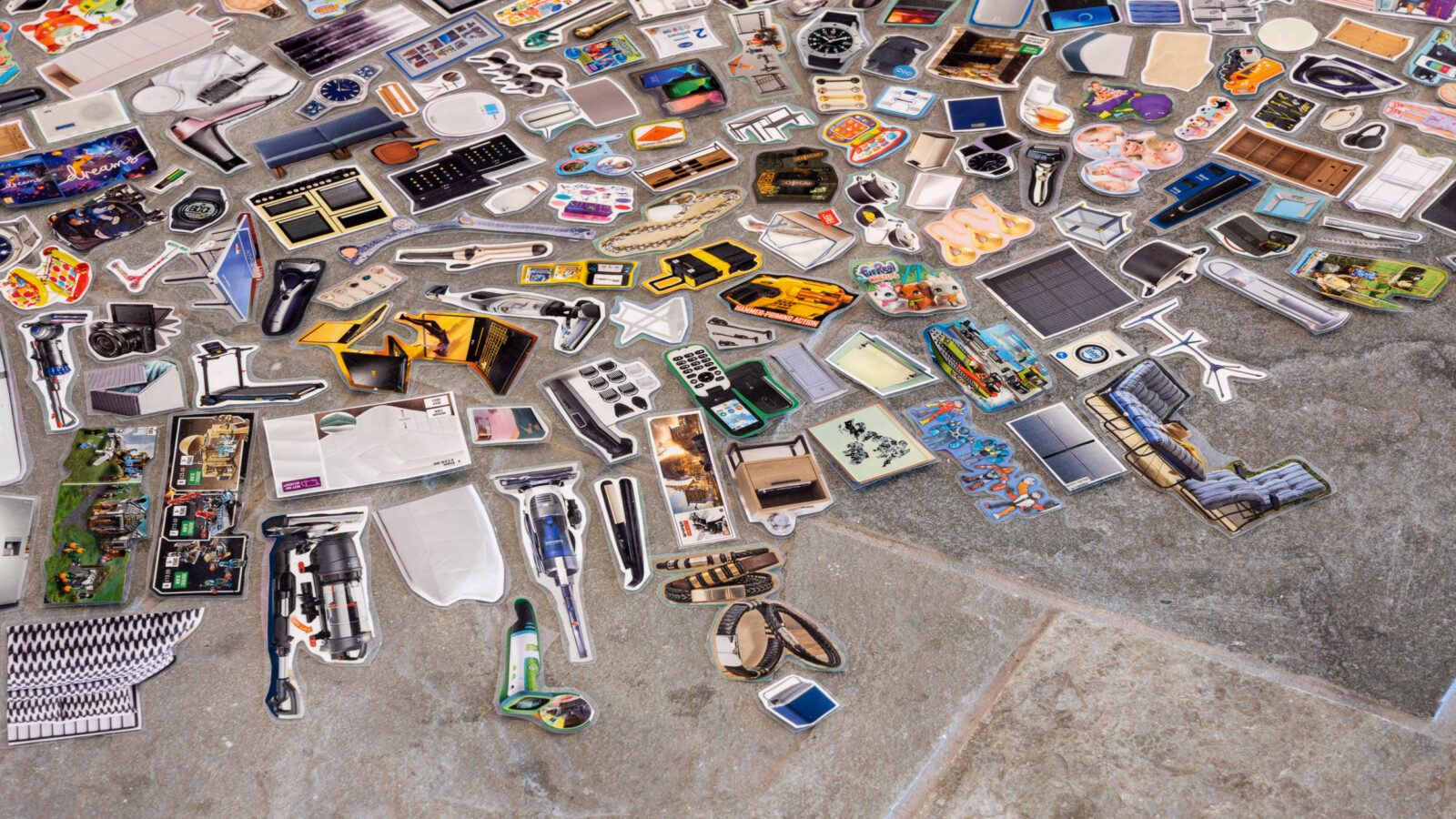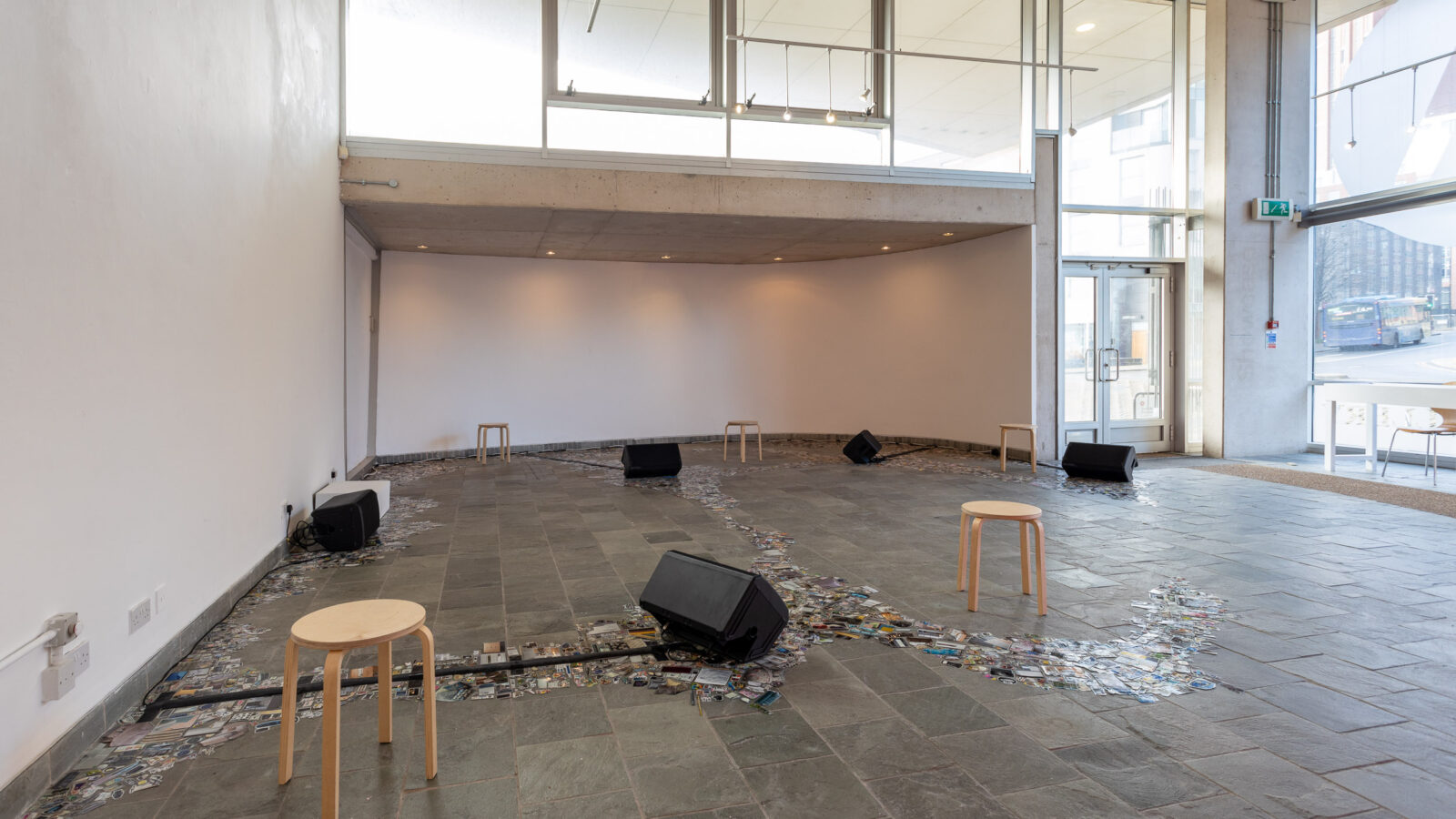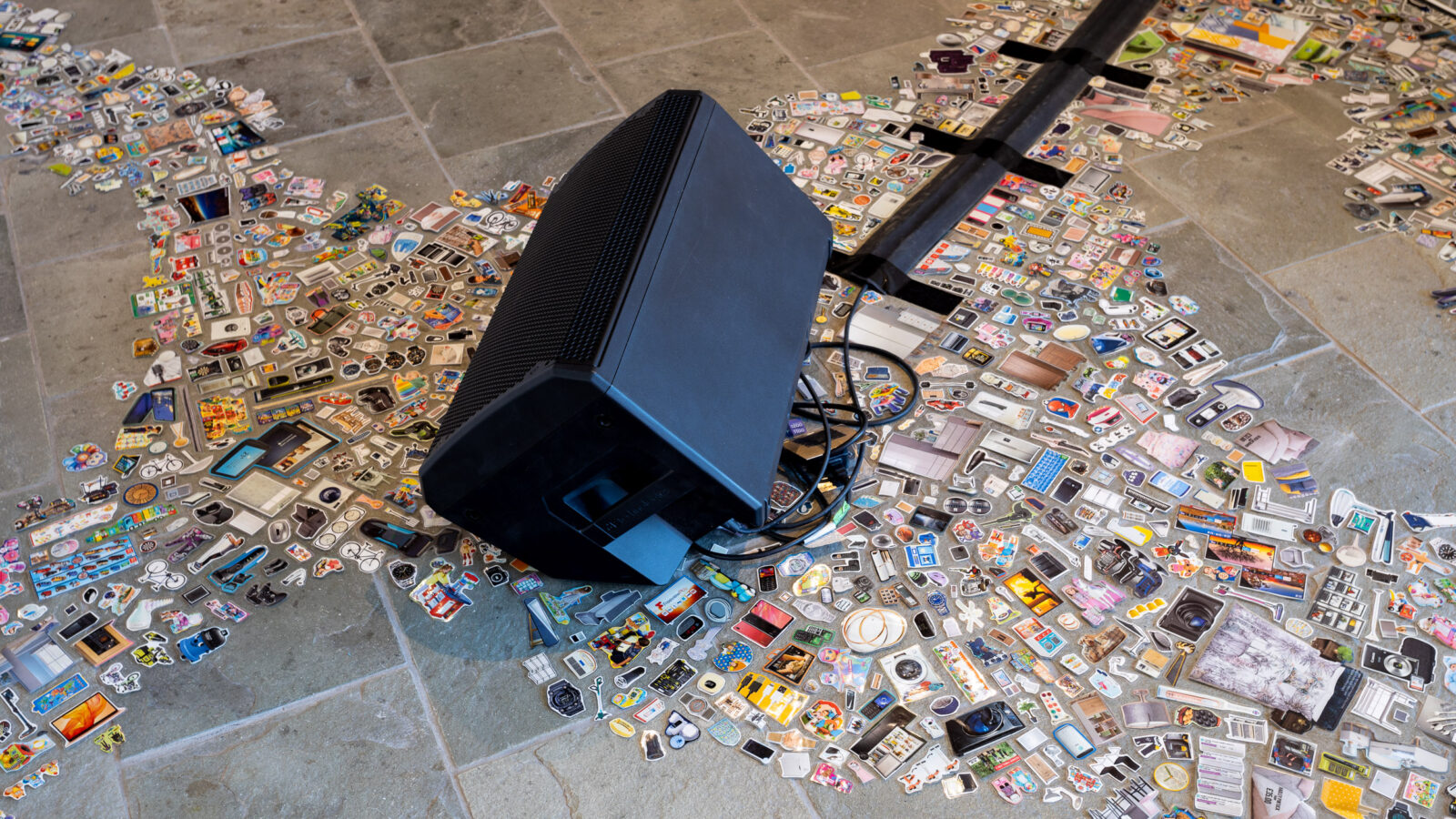Product name: “Marseille click clack fabric sofa bed”
Technical specification: “Height 90cm Width 189cm Depth 102cm”
Price: “Twelve pounds”
Product code: “483-0379”
Unique Selling Proposition: “soft closing doors”
Command: “Add inspiration to your daily life”
These phrases, all drawn from the final printed edition of the Argos catalogue, reverberate across Yorkshire Artspace’s ground floor gallery. The catalogue from which Theresa Bruno draws inspiration and content for her work Gargantua I (2023), was at one point the most widely printed publication in Europe behind the bible. However, with the rise of online shopping, its necessity dissolved and the final edition was published in 2020. These words, which Bruno has organised into several categories including, product name, technical specification, product code, price, unique selling proposition and command, are recited by a range of politely flat, uncannily robotic voices. Emitted from speakers placed across the room, some phrases and words charge out of the speakers at the volume of a yell, while others quietly leak out, whisper-like.
Sometimes they are repeated like chants
[“Achieve perfect results” “Achieve perfect results” “Achieve per-” “Achieve” “Achieve” “Achi-”]
which overlap either on themselves or on other phrases, burying the listener under a wave of commands, prices, and product codes. At other points the sound feels akin to drops of water falling from a single source: Words are crisply pronounced just once, and are not heard again in the same visit. The rhythm and calm tone of the audio is meditative, and the space invites visitors to indulge in this feeling by sitting on the bright red cushions spread around the room. Descending to the floor, now on the same level as the speakers, the second element of the installation comes into focus.
A collage of products from the Argos catalogue, each item carefully cut out and laminated, is arranged across the gallery floor. The work snakes through the space like a liquid, charting new paths and assembling into pools. Although each item has been purposefully placed to create larger organic forms, Bruno’s intention does not extend into classification. For example, dumbbells are surrounded by plush toys, a charging wire, a lamp, a portable camp chair and an electric razor. This careful decision to not place like with like brings an added focus to each object and its contribution to the larger form.
In conversation with the artist, she tells me that she decided to laminate each object to memorialise it. In addition to drawing further focus to the uniqueness of each item, this preservation also engenders themes of nostalgia. Although the Argos catalogue was part of Bruno’s childhood and is nostalgic to her on a personal level, she tells me that this sort of reflection was not her focus in creating Gargantua. The work developed as she made her way back to her practice after years away from artmaking. Back in the early 2010s Bruno used to cut paper as a way of dealing with creative blocks, a method she returned to during the Covid pandemic when she decided to start making art again. At the time, she didn’t have a studio, so she found that cutting things out was a simple and portable way of reapproaching her work. Eventually this led her to the idea of Gargantua, and she began cutting out objects from the 2020 Argos catalogue she purchased on eBay. Bruno had worked with the catalogue before in an earlier work, Asteroids (2014), where she used it to create papier-mache structures. Although Asteroids is covered by a layer of gold paint, the products still peer through. In both works, she deconstructs the catalogue, to create something new, but with Gargantua, which leans more deconstruction than reconfiguration, she takes a more tender approach.
This is understandable. She is creating an archive containing several things. First, there is the physical catalogue, which Bruno refers to as a “working class aspirational document”. Second, the experiences of a generation of people who remember licking and flicking through the publication’s hundreds of pages, circling items they hoped to buy. Last, and more broadly, she is preserving a form of consumerism, holding it in place as technology sprints forward. Bruno tells me that after months of cutting out hundreds of items in the catalogue, she developed a repetitive strain injury. Later, when she was developing the sound piece with Rian Treanor, another artist exhibiting at Platform 22, Bruno experienced another block. When she explained to him that she would have nearly 100,000 sound clips that would need to be processed by the software he was developing to randomise the clips, he told her that the software could not handle the volume. The confluence of these biological and technological halts in the production of Gargantua is mirrored in the experience the work creates. It prompts both a pause and an immersion in an object, a memory, and a practice that has quickly transformed from mundane and disposable to rare and precious.
Words by Salena Barry
Images: Documentation images of Gargantua. Photos by: Jules Lister Photography, 2023.
About Platform:
Platform is an established artistic development programme at Site Gallery which allows artists to explore new ideas in a public space, testing new thinking and research with engaged audiences. It is funded and supported by the Freelands Artist Programme, a five-year programme that supports emerging artists across the UK in partnership with g39, Cardiff, PS2, Belfast and Talbot Rice Gallery, Edinburgh. For this edition, the exhibition was presented across Site Gallery, Yorkshire Artspace and Bloc Projects.


